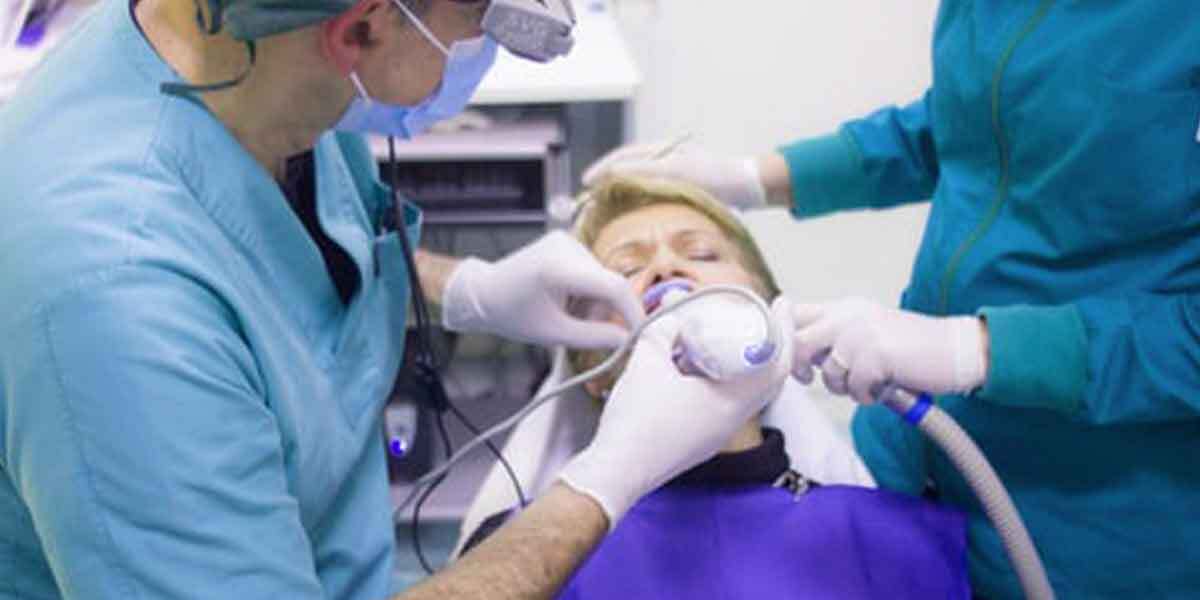Author: nearmedental
Dental implants involve inserting artificial teeth into your mouth to substitute for natural teeth. This dental treatment is helpful to restore the function, shape, and appearance of your smile. Furthermore, implants are useful to support dentures or bridges, replacing one tooth or many at a time. There are many phases in dental implant surgery.
Step-by-step phases in dental implant surgery are crucial to place screws and teeth into your jawbone correctly. Each stage has different goals and treatment strategies to help ensure successful dental implants for the patient’s long-term needs. Phases include assessment and surgery planning, implant placement, abutment placement, and restoration and replacement of teeth.
Here is a detailed outline of all these phases in dental implant surgery:
Assessment Phases in Dental Implant
It is the first step towards dental implant surgery for patients willing to replace missing teeth with crowns or bridges on permanent dental implants. The dentist must decide if this treatment plan is suitable for their patient by examining their health history and performing various tests. Determining whether they are healthy enough to undergo the dental implant surgery procedure is crucial.
The dentist will conduct a clinical examination to assess a patient’s gum health. These tests may include X-rays, CT scans, Intraoral camera use, etc. With the help of assessment phases in dental implant, a dentist can recommend a suitable treatment plan per individual patient’s oral health needs. Thus, both the dentist and patient get an opportunity to decide whether or not they are comfortable proceeding with this dental treatment.
Implant Placement Phase
Once the assessment of the patient’s oral health completes, the implant placement phase begins. Dentists advise that dental implants be placed at least 3 months after teeth have been removed. This strategy ensures full development of the bone holding the tooth in place, which will provide a stable base for placing an implant. The surgical process of placing dental implants usually takes around 30 minutes under local anesthesia.
This phase may require multiple appointments depending on how many teeth need replacement and the number of dental implants required.
Abutment Placement Phases in Dental Implant
This process starts after your jawbone heals from previous surgery to place the metal screws in your mouth without damaging them. The surgeon makes small incisions on both sides of the mouth to create pockets for attaching each implant post in your jawbone. Known as osseointegration, it is a crucial process during this phase.
It is when bone cells start attaching themselves to metal or titanium screws threaded into your jawbone; hence, creating stability for your dental implants. Afterward, the dentist will cap the implant with a temporary crown that is expected to stay on for approximately 3 weeks while the jawbone and gums heal.
In this phase, abutments are seated around your dental implants, which will support replacement teeth during restoration. Abutments help hold crowns in place until your dentist prepares permanent restorations that will attach directly into each implant post foundation. This procedure usually takes 1-2 hours and is completed with local anesthesia.
Restoration Phases (Teeth Replacement)
This phase of your prosthetic tooth or teeth replacement begins immediately after implants have been secured. The dentist attaches crowns or bridges to the dental implant posts with special dental cement that has been cured with ultraviolet light. These crowns, usually made from porcelain, cover the entire length of your implant. They will provide proper chewing function as well as aesthetic benefits for your smile.
Restorations can take up to two weeks to complete. The dentist will make temporary restorations during the assessment phase, which help keep your gums and bone healthy. If you neglect this, you increase your chances of gum disease and bone loss.
Post Restoration Phases in Dental Implant
Usually, the patients have to return 1 to 2 weeks after installing dental implants. This time interval allows the restorations to permanently fix into place. It may take up to three months for your gums to completely heal around the dental implants. After this healing period, your implantation process will complete successfully.
Conclusion – Phases in Dental Implant Surgery
Dental implants are one of the preferred options for people looking for dental replacement procedures. This surgery not only provides a fixed and cosmetic solution but also enhances functionality and comfort. Phases in Dental Implant Surgery may be an ideal long-term solution for patients who have exhausted their other options, such as dental crowns, bridges, or dentures. It’s time to improve both your smile and overall health by opting for the dental implants process.



